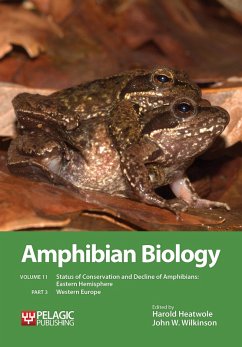Amphibian species around the world are unusually vulnerable to a variety of threats, by no means all of which are properly understood. Volume 11 in this major series will be published in parts devoted to the causes of amphibian decline and to conservation measures in regions of the world; this Part 3 is concerned with Western Europe (Britain, Ireland, The Netherlands, Belgium, France, Spain and Portugal).
Experts from each country contribute a chapter describing the ecological background and the conservation status of affected species, with an emphasis on native species. As well as infectious diseases and parasites (also covered in a general chapter), threats take the form of introduced and invasive species, pollution, destruction and alteration of habitat, and climate change. These are discussed as they affect each species. All these countries have monitoring schemes and conservation programmes, whose origins and activities are described. Recommendations for action are also made.
Edited by leading scholars in the field, Volume 11, when complete, will therefore provide a definitive survey of the amphibian predicament and a stimulus to further research with the objective of arresting the global decline of an entire class of animal.
Experts from each country contribute a chapter describing the ecological background and the conservation status of affected species, with an emphasis on native species. As well as infectious diseases and parasites (also covered in a general chapter), threats take the form of introduced and invasive species, pollution, destruction and alteration of habitat, and climate change. These are discussed as they affect each species. All these countries have monitoring schemes and conservation programmes, whose origins and activities are described. Recommendations for action are also made.
Edited by leading scholars in the field, Volume 11, when complete, will therefore provide a definitive survey of the amphibian predicament and a stimulus to further research with the objective of arresting the global decline of an entire class of animal.
Dieser Download kann aus rechtlichen Gründen nur mit Rechnungsadresse in A, D ausgeliefert werden.

